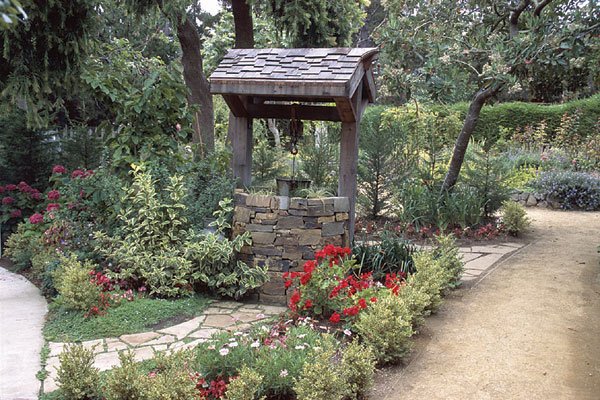A single tree can do wonders for your home and garden. It can
provide colorful fall leaves, flowers, fruit or nuts and raise your
real estate value. It can be an environmentally wise summer air
conditioner for your home. Yes, indeed, a tree is a marvelous
creation!
A single tree can do wonders for your home and garden. It can provide colorful fall leaves, flowers, fruit or nuts and raise your real estate value. It can be an environmentally wise summer air conditioner for your home. Yes, indeed, a tree is a marvelous creation!
Trees also help process carbon dioxide and turn it back into oxygen. This is a very important reason to plant trees in our gardens, parks and cities.
Consider giving trees as anniversary presents, to commemorate important dates in the lives of friends and families or give one or more as a house-warming present. Planting trees just makes a lot of sense.
Fall is for planting, join in!
Below are listed some planting tips and a few varieties of trees that are wonderful additions to your California garden for fall colors.
Several trees to consider for your garden if you’d like to have spectacular fall color are:
n Sapium sebiferum (Chinese Tallow Tree) one of the benefits of this tree is the brilliant autumn foliage it provides. Choose flaming red, bright yellows, to purples and oranges. It is hardy to 10-15 degrees.
n Pistacia chinensis (Chinese Pistache) Pistache are known for their show stopping autumn foliage also. They require no summer watering once established and do best with deep infrequent watering.
n Liquidambar (Sweet Gum) A popular street tree with a cone shaped growth habit. Spreading with age. Provides brilliant fall foliage. Leaves color best when trees are in full sun and well draining soil. Fall color is less effective in milder climates.
Here are some tips on how to plant a tree successfully:
1. Dig the hole two times wider than the container or root ball of the tree. Make vertical sides to the hole and roughen them so the roots can penetrate.
2. Remove the container just before the tree is put into the hole. Move the tree by the root ball rather than the trunk. Minimize the time the roots are exposed to air. Roots circling around the outside of the root ball should be cut vertically in five places around the circumference. Cut off matted roots from the bottom of the root ball.
3. Set the root ball on undisturbed soil. Adjust the best side of the tree to face the direction you want. Make sure the top surface of the root ball is one inch higher than the natural soil grade. Lay a stick or shovel handle across the hole to see if the root ball is high or low.
4. Fill the hole in and around the root ball with the soil you removed from the hole in Step One. If the soil is filled with rocks, rake out the larger ones. Break up any clods and mix them with good topsoil. Firm the soil around the root ball until the hole is two-thirds full.
5. Fill the remaining space with water. Finish filling the hole with soil, but do not tamp. No fill soil should be put on top of the root ball.
6. Mound what soil is left into a six-inch high berm around the edge of the planting hole. Fill the basin around the tree with water to wet and settle the soil.
7. Place a three-inch layer of mulch (bark or organic compost) around the tree. Mulch helps control weeds and retains water in the soil. Keep lawns 18 inches away from the trunk.
8. Remove the stake that came with the tree. Restake your tree only if the tree cannot support itself. Use two stakes and place them 12 inches away from the trunk on either side to support the tree against the wind. Use soft flexible garden ties to secure the tree to the stakes.
California Association of Nurseries and Garden Centers and California ReLEAF














